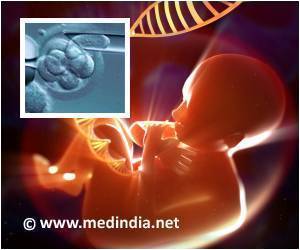An Olympic cauldron, a sunken desert oasis and a London double-decker bus are among the creations of British designer Thomas Heatherwick, but the artist apparently seems very unpredictable.

"I'm a three-dimensional designer," he told AFP in an interview in Hong Kong, a city where he has also left his imprint in the 166 million pound (US$280 million) redesign of high end shopping mall Pacific Place.
"I don't see things as different disciplines. It's the healthiest thing for your response to a project if you can be as free from pre-set assumptions as possible when you're beginning," he said.
"We've tried to be experts at not being experts, which means working with really good experts on every project."
His London-based Studio Heatherwick -- which after the 2012 Olympics denied a New York firm's claim that it designed something that bore similarities to the cauldron earlier -- defines its projects only in terms of whether they are "small", "medium" or "large".
Its latest is a garden -- albeit one that requires its own custom-built bridge spanning the River Thames.
Advertisement
While Heatherwick is reluctant to categorise himself, the one constant in his work is its combination of practicality with a frequently stunning sense of poetry, putting humanity at the forefront of projects that are growing in scale along with the cities they appear in.
Advertisement
"But humans are still roughly the same size they were a few centuries ago, give or take a few centimetres.
"So how do you make big projects still relate to the human scale?"
- 'Sensitive not sterile' -
His hive-shaped design for a wing of Singapore's imposing Nanyang Technological University is meant to foster the kind of togetherness and sociability denied by the building's otherwise long, stark corridors -- to the extent that Singapore's education minister was moved to declare at the ground-breaking ceremony that it will "increase the birth rate of Singapore".
Heatherwick's desire to keep people connected can be seen in everything from his studio's design for a sunken Al Fayah Park in Abu Dhabi -- whose coverings resemble cracked desert soil -- to a biomass power station in Britain that doubles as a park for the public.
He is also working on a pedestrian bridge over river traffic in Beijing that rises and falls without separating, a subtle contribution in the decades-long movement of hundreds of millions of people from China's countryside to its giant cities in the greatest human migration in history.
"I don't mind if things are taller but it's important that there is a care or love in the things that do come through," said Heatherwick in reference to the world's changing landscapes and monolithic buildings that frequently break up the pattern and flow of streets below.
"We underrate our human sensitivities and how places change behaviour dramatically," he said, adding that buildings need to be "sensitive not sterile" to their environments.
"We will look back -- the lessons are already there -- and regret that insensitivity in handling scale, and that's what I'm very interested in."
- Taking back the city -
The 150 million pound Garden Bridge is the brainchild of actress and Gurkha-rights activist Joanna Lumley and chimes with a similar concept in New York -- the High Line project, a park built on a former elevated railroad on Manhattan.
Heatherwick says 91 million pounds has been raised so far and with planning permission expected in coming months, a public fundraising campaign will be launched in the summer.
The aim is to invite the public -- an invitation extended even to Hong Kong -- to contribute anything from a blade of grass to one of the gardens held on what is essentially two giant planters made from the same alloy as oil rigs and ship propellers.
If it goes ahead, the project will provide the opportunity to meander or stop to take in views of a city whose skyline is rapidly changing.
"It's important to see a city as a constantly adjusting, twitching, growing and mutating, morphing -- an almost natural creation," said Heatherwick.
"I look at all the buildings and the things that are made by man and it's as if we've got used to feeling that man is a bad force. I take a more positive view."
"Our project will have an effect on the next things that happen around it, a new ingredient which will hopefully inspire, encourage, raise aspirations. The next layer."
Source-AFP









